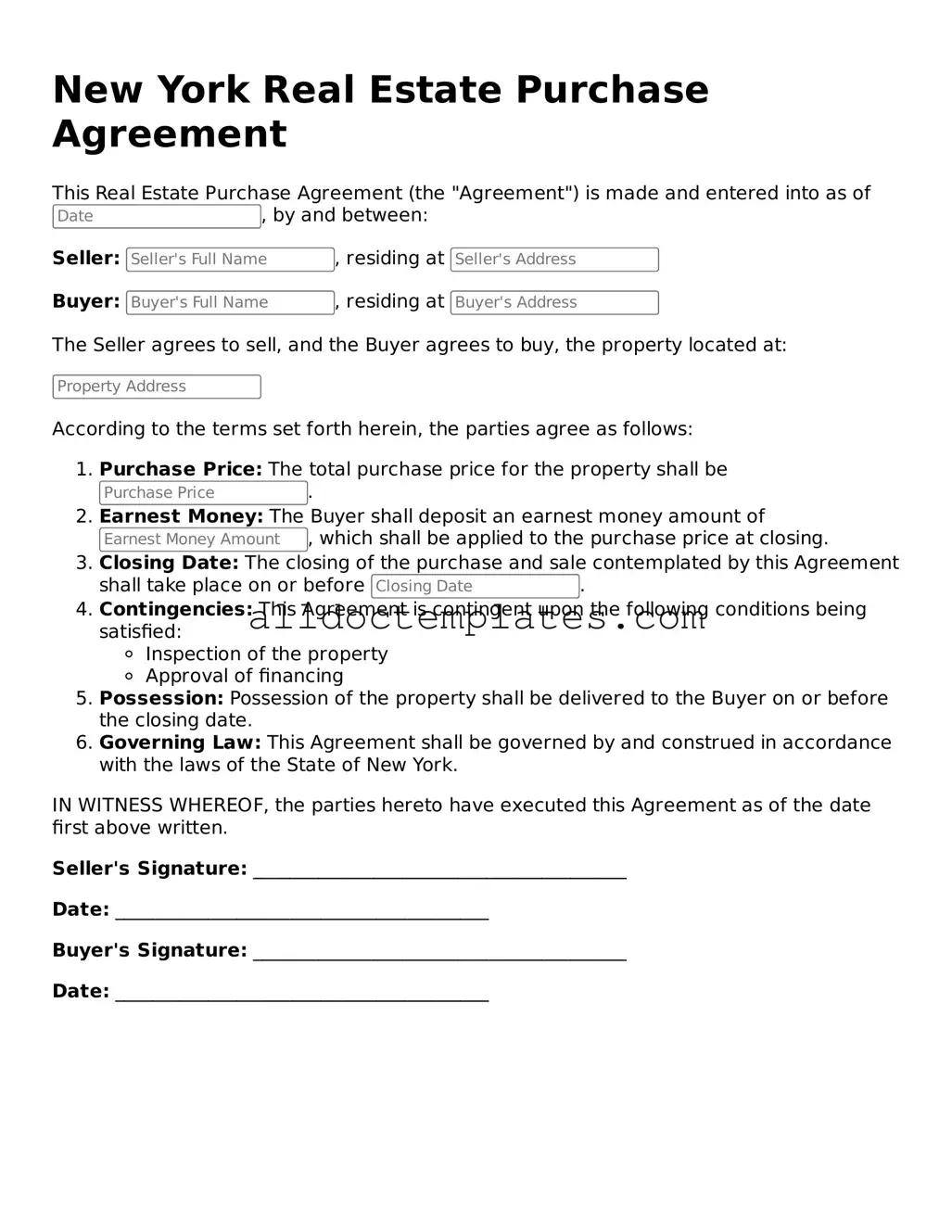Free Real Estate Purchase Agreement Document for New York State
The New York Real Estate Purchase Agreement is a legal document that outlines the terms and conditions under which a property is bought and sold in New York State. This agreement serves as a binding contract between the buyer and the seller, detailing essential aspects such as the purchase price, closing date, and any contingencies. Understanding this form is crucial for both parties to ensure a smooth transaction and to protect their interests throughout the buying process.
Get Your Form Now
